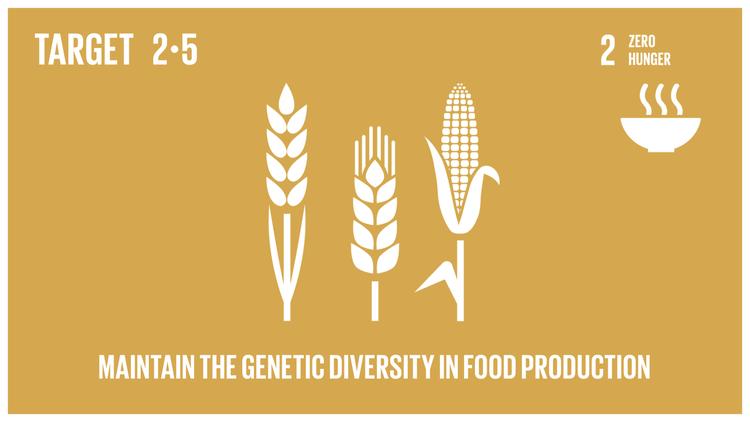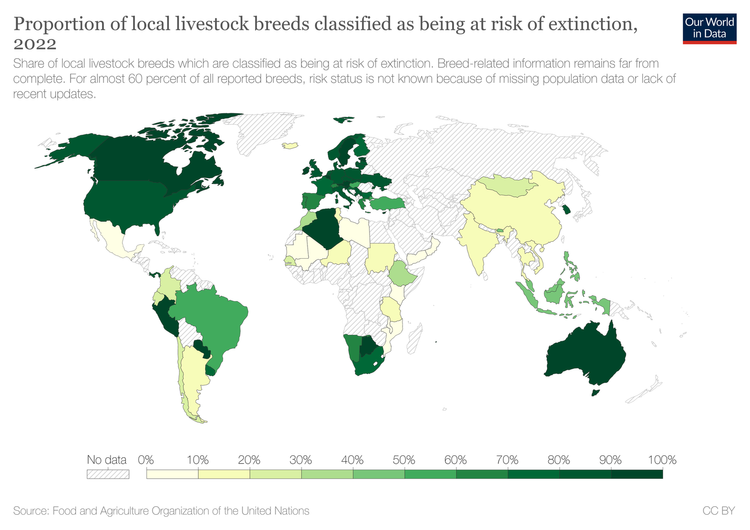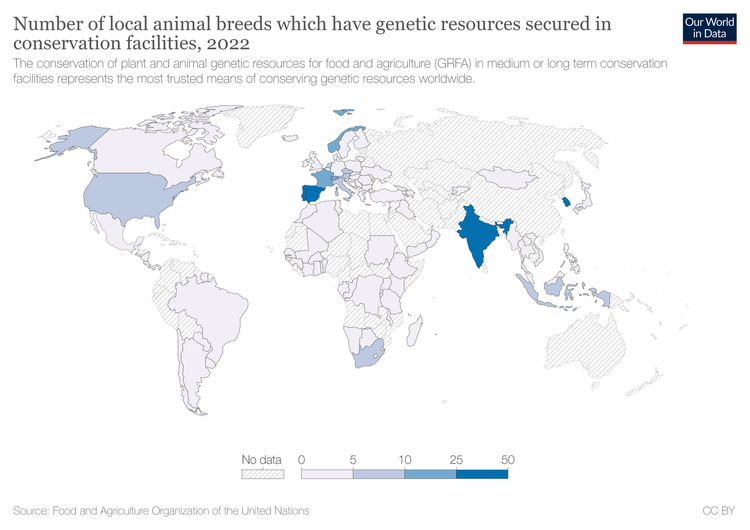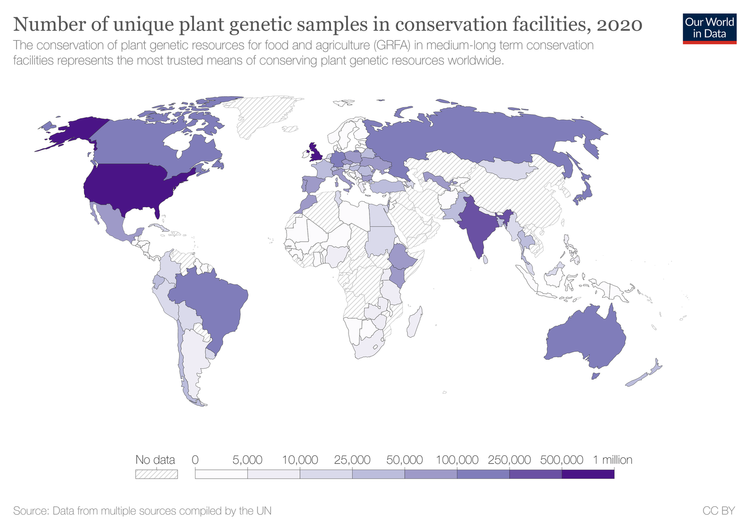SDG #2 is to “End hunger, achieve food security and improved nutrition and promote sustainable agriculture”
Within SDG #2 are eight targets, of which we’ll here focus on Target 2.5:
By 2020, maintain the genetic diversity of seeds, cultivated plants and farmed and domesticated animals and their related wild species, including through soundly managed and diversified seed and plant banks at the national, regional and international levels, and promote access to and fair and equitable sharing of benefits arising from the utilization of genetic resources and associated traditional knowledge, as internationally agreed.
Within target 2.5 are two indicators:
Indicator 2.5.1: Number of (a) plant and (b) animal genetic resources for food and agriculture secured in either medium- or long-term conservation facilities.
Indicator 2.5.2: Proportion of local breeds classified as being at risk of extinction.
The UN agency overseeing the topic of genetic resources for food and agriculture is the Food and Agriculture Organization’s Commission on Genetic Resources for Food and Agriculture.
Much of this conservation occurs in gene banks, which are biological repositories of the DNA and RNA of life forms, which exist to maintain the diversity of genes of various lifeforms. One of the reasons for this is because biodiversity - explored in greater depth in Goals #14 and 15 - is necessary for food security, in line with the aims of Goal #2 to end hunger and ensure sustainable agriculture.
Genebanks maintain such samples outside their natural environment (or ex situ) rather than protected or managed on the farm (in situ). The FAO maintains two systems to help account for the genes maintained by gene banks, each system pertaining to the respective use of animals and plants for food and agriculture: the Domestic Animal Diversity Information System (DAD-IS) and the WIEWS (World Information and Early Warning System on Plant Genetic Resources for Food and Agriculture).
The management of plant genetic resources for food and agriculture is guided by International Treaty on Plant Genetic Resources for Food and Agriculture, a global treaty aiming to ensure food security, nature conservation, and the sustainability of plant genetic resources. This treaty is implemented via the Second Global Plan of Action for Plant Genetic Resources for Food and Agriculture, adopted by the FAO in 2011.
The corresponding agreement for animal genetic resources for food and agriculture is the Global Plan of Action for Animal Genetic Resources, adopted by the FAO Commission on Genetic Resources for Food and Agriculture in 2007, as well as the Convention on Biological Diversity.




